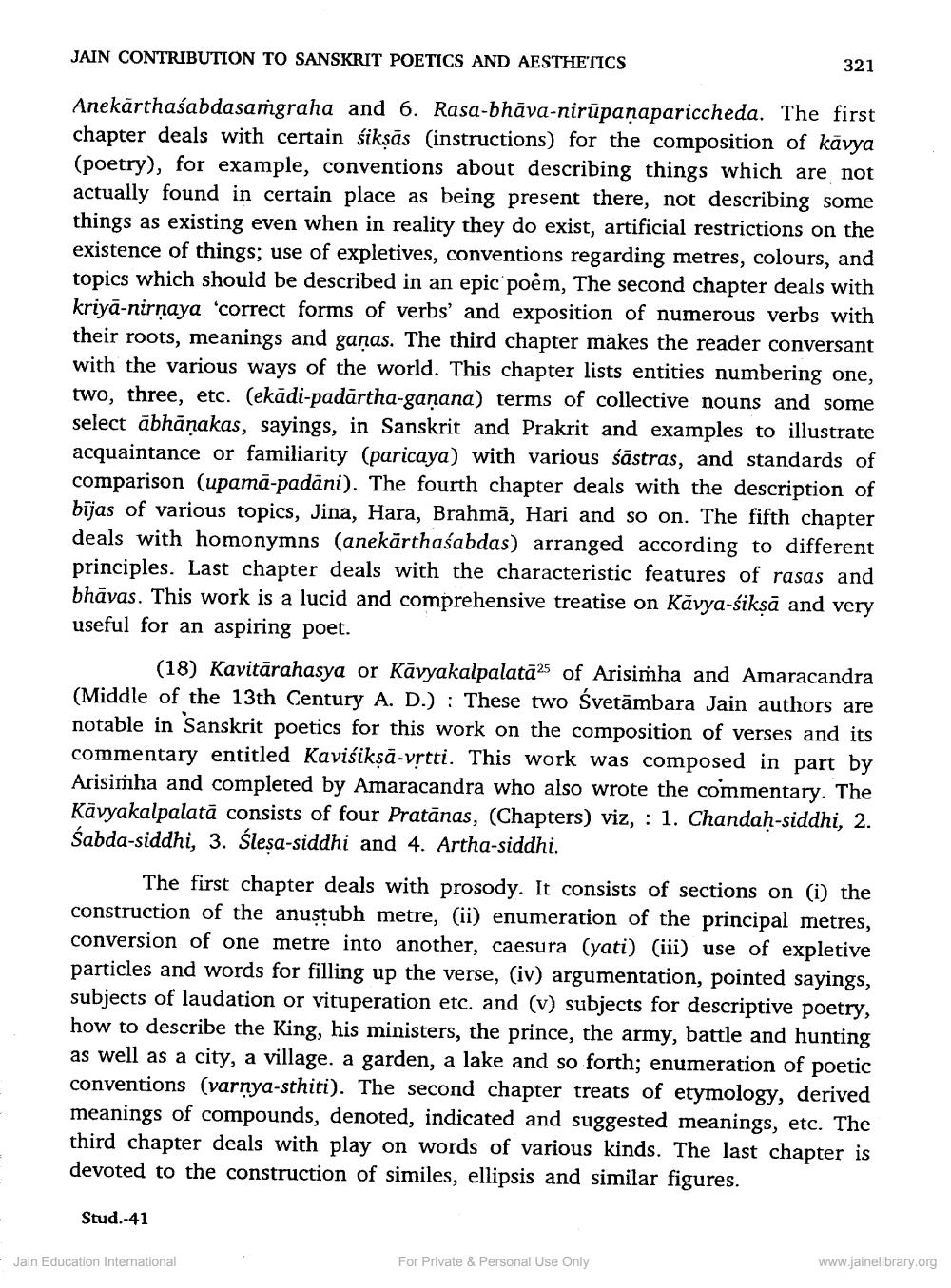________________ JAIN CONTRIBUTION TO SANSKRIT POETICS AND AESTHETICS 321 Anekarthasabdasamgraha and 6. Rasa-bhava-nirupanapariccheda. The first chapter deals with certain siksas instructions) for the composition of kavya (poetry), for example, conventions about describing things which are not actually found in certain place as being present there, not describing some things as existing even when in reality they do exist, artificial restrictions on the existence of things; use of expletives, conventions regarding metres, colours, and topics which should be described in an epic poem, The second chapter deals with kriya-nirnaya 'correct forms of verbs' and exposition of numerous verbs with their roots, meanings and ganas. The third chapter makes the reader conversant with the various ways of the world. This chapter lists entities numbering one, two, three, etc. (ekadi-padartha-ganana) terms of collective nouns and some select abhanakas, sayings, in Sanskrit and Prakrit and examples to illustrate acquaintance or familiarity (paricaya) with various sastras, and standards of comparison (upama-padani). The fourth chapter deals with the description of bijas of various topics, Jina, Hara, Brahma, Hari and so on. The fifth chapter deals with homonymns (anekarthasabdas) arranged according to different principles. Last chapter deals with the characteristic features of rasas and bhavas. This work is a lucid and comprehensive treatise on Kavya-siksa and very useful for an aspiring poet. (18) Kavitarahasya or Kavyakalpalata25 of Arisimha and Amaracandra (Middle of the 13th Century A. D.) : These two Svetambara Jain authors are notable in Sanskrit poetics for this work on the composition of verses and its commentary entitled Kavisiksa-vrtti. This work was composed in part by Arisimha and completed by Amaracandra who also wrote the commentary. The Kavyakalpalata consists of four Pratanas, (Chapters) viz, : 1. Chandah-siddhi, 2. Sabda-siddhi, 3. Slesa-siddhi and 4. Artha-siddhi. The first chapter deals with prosody. It consists of sections on (i) the construction of the anustubh metre, (ii) enumeration of the principal metres, conversion of one metre into another, caesura (yati) (iii) use of expletive particles and words for filling up the verse, (iv) argumentation, pointed sayings, subjects of laudation or vituperation etc. and (v) subjects for descriptive poetry, how to describe the King, his ministers, the prince, the army, battle and hunting as well as a city, a village, a garden, a lake and so forth; enumeration of poetic conventions (varnya-sthiti). The second chapter treats of etymology, derived meanings of compounds, denoted, indicated and suggested meanings, etc. The third chapter deals with play on words of various kinds. The last chapter is devoted to the construction of similes, ellipsis and similar figures. Stud.-41 For Private & Personal Use Only www.jainelibrary.org - Jain Education International




